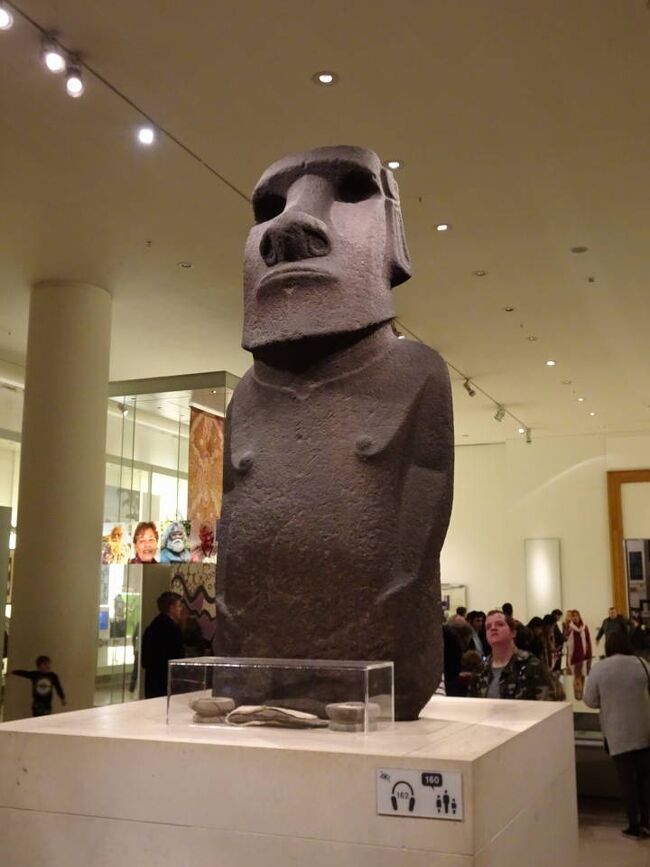
2020/02/08 - 2020/02/11
2383位(同エリア9830件中)
![]()
something like thatさん
- something like thatさんTOP
- 旅行記357冊
- クチコミ161件
- Q&A回答1件
- 273,460アクセス
- フォロワー25人
ヨーロッパに住んでいて今更、ロンドン観光。いつでも行けると思っていると結局行っていない典型的な例。
この旅行記は2020年2月のもの。見どころ満載の大英博物館にほぼ終日いました。(雨も降っていたこともあるけど)
2日目 ウェストミンスター大聖堂、大英博物館(後編)
大英博物館、Room24以降の展示です。
表紙の写真はモアイ像(Room24)
- 旅行の満足度
- 4.5
- 観光
- 4.5
- 同行者
- 一人旅
- 交通手段
- 徒歩
- 旅行の手配内容
- 個別手配
PR
-
Room24
Living and Dying
モアイ像
超有名なものなので説明は省きますが、本物が見れて感動。
宮崎県にあるものはみたことがあるのですが(あちらは触り放題)。
https://www.britishmuseum.org/collection/object/E_Oc1869-1005-1
https://artsandculture.google.com/streetview/british-museum/AwEp68JO4NECkQ?sv_lng=-0.1273639238973772&sv_lat=51.5197745916216&sv_h=299.58404192758854&sv_p=5.701829565430501&sv_pid=_4TRwmlBDh2UDh1A7AWCKQ&sv_z=1 -
Room63
2階に上がるとミイラがお出迎え。
このあたりは人気があり混雑している。 -
Room63
Egyptian death and afterlife: mummies
About 2686 BC?AD 395
The Roxie Walker Galleries
ミイラがたくさん。。。少し不気味。 -
Room63
Egyptian death and afterlife: mummies
About 2686 BC?AD 395
The Roxie Walker Galleries
Mummy of Katebet
Late 18th Dynasty, about 1300BC
From Thebes
The mummy of the woman Katebet was discovered in the 1820s in a tomb at Thebes, together with the mummy of a man named Qenna, possibly her husband. Like Katebet's wooden coffin(room62), the two pectorals and shabti figure placed on her mummy appear to have been designed for a man and adapted for her burial. Her fine gilded cartonnage mask represents Katebet wearing an elaborate wig with calcite ear-studs, a broad collar, bracelets and real finger-rings. Analysis of the surface decoration of the trappings has revealed an almost pure gold leaf on the mask. The white metal of the pectorals is not silver, but pure tin. The shabti is of low-fired ceramic or clay, with applied gesso and gold leaf on the head, and copper foil on the torso. At the time of the discovery, the coffin also contained plaits of hair wrapped in linen(case14), a pair of sandals and floral garlands, now lost. -
Room63
Egyptian death and afterlife: mummies
About 2686 BC?AD 395
The Roxie Walker Galleries
Mummy of Katebet
Late 18th Dynasty, about 1300BC
From Thebes
ぱっと見たら、conversation(会話)と勘違いしていて、頭の中が??となったが、よくよく見るとconservation(保存、管理)。混んでいるので後回しして隣の部屋へ移動。 -
Room 64
Early Egypt
11000-2600 BC
Hunters palette
The sacrifice of wild animals played an important role in early Egyptian temple ritual by demonstrating control over the chaos in the world. Here two rows of well-equipped hunters both corral and capture wild animals for presentation at the shrine above, and bravely confront a lioness with her cub. This is one of the earliest of the elaborately decorated palettes of the Late Predynastic period. It shows the development of artistic conventions for depicting the human body: head and legs in profile, with the torso in three-quarter view.
Room64
https://artsandculture.google.com/streetview/british-museum/AwEp68JO4NECkQ?sv_h=54.00301888204916&sv_p=-8.42094520715058&sv_pid=et5FHeAljS4m4o5fXm_2OA&sv_lid=3582009757710443819&sv_lng=-0.1273139300359389&sv_lat=51.51993227871718&sv_z=0.6911292499459274 -
Room 64
Early Egypt
11000-2600 BC
Painted Female Statuette
Pigments ground on palettes were applied to the body as shown by this statuette. On the front of her body are elements of the fertile Nile valley including a hippopotamus on her belly and geometric symbols probably representing water and plants. zgreen malachite surrounds here eyes. This pigment had medicinal qualities and was valued for its colour, evoking new growth.
On her back, collared dogs hunt antelopes. They representcontrol over the dangers in the desert. Her elaborate jewellery, including bracelets, anklets, and several necklaces in red, suggests a special occasion.
This statuette may represent a goddess, priestess or participant in a ritual ceremony. -
Room 64
Early Egypt
11000-2600 BC
Gebelein Man
The Gebelein predynastic mummies are six naturally mummified bodies, dating to approximately 3400 BC from the Late Predynastic period of Ancient Egypt. They were the first complete predynastic bodies to be discovered. The well-preserved bodies were excavated at the end of the nineteenth century by Wallis Budge, the British Museum Keeper for Egyptology, from shallow sand graves near Gebelein (today, Naga el-Gherira) in the Egyptian desert.
Budge excavated all the bodies from the same grave site. Two were identified as male and one as female, with the others being of undetermined sex. The bodies were given to the British Museum in 1900. Some grave-goods were documented at the time of excavation as "pots and flints", however they were not passed on to the British Museum and their whereabouts remain unknown. Three of the bodies were found with coverings of different types (reed matting, palm fibre and an animal skin), which still remain with the bodies. The bodies were found in foetal positions lying on their left sides.
Since 1901, the first body excavated (EA 32751) has remained on display in the British Museum. This body was originally nicknamed Ginger due to his red hair; this nickname is no longer officially used as part of recent ethical policies for human remains.(Wikiより)
※かつては残っていた赤い髪から、ジンジャーマンのニックネームで呼ばれていたが、今では公式にこの名前は倫理的な方針から使用されていない。発掘された地名で呼ばれている。 -
Room 64
Early Egypt
11000-2600 BC
Gebelein Man
In November 2012 it was revealed that EA 32751 (Gebelein Man) had probably been murdered. A CAT scan of the mummified body taken at the Cromwell Hospital in London showed that Gebelein Man was aged about 18 to 20 at the time of his death and was well-muscled. Under his left shoulder blade, the scan revealed a puncture to the body; the murder weapon was used with such force that it slightly damaged the shoulder blade, but shattered the rib beneath it and penetrated the lung. It was believed that the injury was caused by a copper blade or flint knife at least 12 cm in length and 2 cm wide. Daniel Antoine, the British Museum's expert on human remains, believes that Gebelein Man had been taken by surprise by the attack as there were no defense wounds. -
Room 64
Early Egypt
11000-2600 BC
Gebelein Man -
Room 64
Early Egypt
11000-2600 BC
Gebelein Man -
Room 64
Early Egypt
11000-2600 BC
Rock inscription of King Zanakht
This relief was originally carved into the cliffs at Wadi Maghara in Sinai. It commemorates an expedition to the turquoise mines there by King Zanakht of the Third Dynasty. Emulating his royal ancestor Den, Zanakht smites an eastern tribesman, preserved here only by the lock of hair in the king's hand. To the right, hieroglyphs spell out one of the earliest examples of the word for turquoise: mefkat.
Sinai, Wadi Maghara, Third Dynasty, EA 691
https://www.britishmuseum.org/collection/object/Y_EA55586 -
Room 64
Early Egypt
11000-2600 BC
The royal afterlife
First Dynasty
3100-2890BC
First Dynasty kings were buried at Abydos with everything needed to make their huge tombs luxurious palaces for eternity: food, dishes, furniture, jewellery, tools, weapons and even board games. The amount of equipment grew so large that King Den added a strairway for loading the tomb in advance. Robbed many times over the millemmia, now only fragments of the furnishings survive. Yet they offer a glimpse of the oplent life style and far-reaching power of Egypt's first pharaohs.
The snake game
Games were popular with the king and his court. This limestone board, carved in the shape of a coiled serpent, was for playing mehen, the snake game. Two teams, with up to six players, raced marbles around the snake from tail to head and back again. From at tomb painting(below), we know the game also involved ivory figurines of lions. Many were found with retainers buried near the king, and might mark their owners as favoured gaming partners. Playing mehen was not merely entertainment; victory at the game symbolised success in the afterlife. -
Room 65
Sudan, Egypt and Nubia
Prehistory - AD 1000s
Kerma culture burial, around 2050-1750BC
This reconstructed burial shows a typical Kerma culture grave from a cemetery in northern Sudan. The man has been placed in a crouched position on this right side, his head to the east, facing north. Sacrificed sheep/goats are by his feet, with pottery vessels and joints of meat to one side. Such ritual practices suggest that these people believed in some form of afterlife.
Analysis of the skeleton showed that these are the remains of an adult male who was approximately 1.75m tall. He died between the ages of 35 and 50 and his teeth are heavily worn. This has led to dental disease and his upper jaw (maxilla) has a large abscess above one of the incisors. The healed fractures on his feet, ribs and long bones suggest an active or violent life. The fracture on his right ulna -called a parry fracture-usually occurs when the arm is lifted to deflect a blow to the head. The meat offerings, from sheep and/or goats, are all from young animals.
Room65
https://artsandculture.google.com/streetview/british-museum/AwEp68JO4NECkQ?sv_h=221.18308341413444&sv_p=1.8500289683440627&sv_pid=NSZ2C03EUvOSB1VbfS2hNw&sv_lid=3582009757710443819&sv_lng=-0.1270150446470666&sv_lat=51.52004238581259&sv_z=1 -
Room 65
Sudan, Egypt and Nubia
Prehistory - AD 1000s
Granite of sphinx of Taharqo
25th Dynasty, about 690-664BC
From Kawa, Temple 'T'
The framing of the face with a lion's mane is a feature borrowed from Egyptian royal sculpture of the Middle and New Kingdoms. The double uraeus, the cap-like headdress and the vigorous carving of the king's facial features are purely Nubian in inspiration.
https://www.britishmuseum.org/collection/object/Y_EA1770 -
Room 65
Sudan, Egypt and Nubia
Prehistory - AD 1000s
Fourth Cataract rock art
This image of a long-horned cow has been made by chipping, or pecking away, at the surface of the rock using a stone tool. Rock art like this has been made in the Fourth Nile Cataract region of Sudan for many thousands of years, with many pieces dating back to the Kerma period(2500-1450BC). Cattle, like the cow seen here, are a very common motif in the rock art of this area. -
Room 52
Ancient Iran
3000 BC-AD 651
The Rahim Irvani Gallery
Silver plate showing a Sasanian lion hunt(Sasanian=ササン朝ペルシャ)
The rider is popularly interpreted as the 5th century Sasanian King Bahram V, who was renowned for his hunting exploits. However, it is more likely that this plate is a later attempt to glorify the hunting exploits of the Sasanian monarchy rather than being a specific portrait. The successful hunt became a metaphor for royal khwarnah(divine glory and good fortune), and this extended to the owners of the plate.
5th-7th century AD, possibly from India or Afghanistan
Room52
https://artsandculture.google.com/streetview/british-museum/AwEp68JO4NECkQ?sv_h=112.12872461019444&sv_p=-1.4101362271402706&sv_pid=Gh4yDZyhD1kGCO124RK-ng&sv_lid=3582009757710443819&sv_lng=-0.1268267669683212&sv_lat=51.51993949542507&sv_z=2.6929114552879367 -
Room 52
Ancient Iran
3000 BC-AD 651
The Rahim Irvani Gallery
展示室の壁に掛かった大きな展示物、階段の横の壁画らしい(左右ある) -
Room 52
Ancient Iran
3000 BC-AD 651
The Rahim Irvani Gallery -
Room 52
Ancient Iran
3000 BC-AD 651
The Rahim Irvani Gallery
中央の碑文(説明は次) -
Room 52
Ancient Iran
3000 BC-AD 651
The Rahim Irvani Gallery
This inscription is written in an ancient script called cuneiform(くさび型文字). It records that King Artaxerxes III(ruled 359-338BC) rebuilt the staircase on which this inscription was carved. The staircase was a later alteration to the Palace of Darius.
Nineteenth-century plaster cast taken from sculptures on the Palace of Darius at Persepolis, Iran.
"A great god is Ahura Mazda who created this earth, who created yonder sky, who created man, who created happiness for man, who created me, Artaxerxes...
This stone staircase was built by me in my time. Saith Artaxerxes the King:Me may Ahura Mazda and the god Mithras protect, and this country, and what was built by me."
Extract from inscription -
Room 52
Ancient Iran
3000 BC-AD 651
The Rahim Irvani Gallery -
Room 52
Ancient Iran
3000 BC-AD 651
The Rahim Irvani Gallery
公式インターネット上の説明に驚いた。どうやら、Ebayで購入したものらしい。
Acquisition notes
One of four postcards purchased from this individual through ebay on 18th February 2014.
https://www.britishmuseum.org/collection/object/W_EPH-ME-1970 -
Room 52
Ancient Iran
3000 BC-AD 651
The Rahim Irvani Gallery
The Cyrus Cylinder(キュロス・シリンダー)
日本語のWikiがあったので、貼り付けておく。
キュロス・シリンダー(キュロスの円筒、英語: Cyrus Cylinder、ペルシア語: ????? ??????)は、アケメネス朝ペルシアのキュロス大王の功績を称える文章が印刻された古代の遺物。現在、ロンドンの大英博物館に所蔵されている。
キュロス・シリンダーは、1879年にホルムズド・ラッサム(英語版)がバビロンのマルドゥク神殿を発掘したときに発見した断片で、35行からなるアッカド語の刻文が記されていた。これに続く36行目から45行目までをイェール大学が所蔵していることが後に明らかになった。冒頭の3行は破損していてほとんど読めない。
刻文の内容は、まずバビロニア王(ナボニドゥス)がマルドゥク神に罪を得たことを述べ、怒ったマルドゥク神がアンシャン王であったキュロスに世界の王としての地位を与えたと記す。キュロスはマルドゥク神の命令によって諸国を征服し、バビロンに無血入城した(1-19行)。
ついでキュロスの一人称による記述になり、キュロスはテイスペスの子孫たる自分の家系を記す。キュロスはバビロニアの民衆に安寧をもたらすものであること、マルドゥク神がキュロスとその軍隊を祝福していると述べる。各地の王が貢ぎ物を持ってキュロスを訪れてひざまずいた。キュロスは信仰を奪われた各国に対してその神々の像を返し、ナボニドゥスがバビロンに連れ去った各地の住民を元の国に返した。キュロスは諸国の人々がキュロスとカンビュセスのために祈るように命じた。
最後に、自分が多くの生贄をささげ、またバビロンを囲む城壁を築いていることを述べている。バビロンの町の建設中にアッシュールバニパルの碑文を発見したことが記されている。
聖書との関係
キュロス・シリンダーの文章は、それだけ読めばキュロス2世によるプロパガンダの文章であるが、旧約聖書の歴代誌下36章、エズラ記の1章および6章、イザヤ書44章に見える、キュロスがバビロン捕囚でバビロンに移住させられた人々を解放し、神殿の再建を許した記事を裏付けるものとして注目された。ただし、キュロス・シリンダー自身はとくにユダヤ人については何も記していない。
近代のプロパガンダ
モハンマド・レザー・パフラヴィーは、1971年にイラン建国二千五百年祭典を開催し、キュロス・シリンダーを「史上最初の人権宣言」と呼んで、そのレプリカを国際連合に贈り、国際連合の6つの公用語に翻訳した。 -
RRoom 52
Ancient Iran
3000 BC-AD 651
The Rahim Irvani Gallery -
Room 52
Ancient Iran
3000 BC-AD 651
The Rahim Irvani Gallery
Assyrian campaigns in Egypt
This panel shows the Assyrian army attacking the Egyptian city of Memphis and commemorates the final victory of King Ashurbanipal over King Taharka in 667BC. The gypsum panel was originally painted for the interior walls of King Ashurbanipal's palace at Nineveh. At the top, Assyrians storm the fortress, trying to set fire to the gate and undermine the walls. Nubian soldier, recognisable by the single upright feathers on their heads, are being marched off as prisoners. Egyptian civilian prisoners are shown as a group with two children on a donkey. Below is the River Nile with fish and crabs.
645-635BC, Reign of Ashurbanipal
From the North Palace, Nineveh, northern Iraq. -
Room 51
Europe and Middle East
10,000~800 BC
The Sheikh Zayed Bin Sultan Al Nahyan Gallery
Gold cape
In 1833 labourers discovered the remains of a skelton in a stone-lined grave. The cape was crushed around the chest area. Only small fragments of bone remained, so the age, sex and state of health of the individual remains unknown. The cape is unique, so its owner must have been some of high status.
Early Bronze Age, about 1900-1600BC
Mold, Flintshire, Wales
Room51
https://artsandculture.google.com/streetview/british-museum/AwEp68JO4NECkQ?sv_h=300.6356371287584&sv_p=-3.4841879306387114&sv_pid=7ZMFcrVjcAC25PJG77CyNA&sv_lid=3582009757710443819&sv_lng=-0.1265439433340418&sv_lat=51.51968730167332&sv_z=0.6911292499459276 -
Room 51
Europe and Middle East
10,000~800 BC
The Sheikh Zayed Bin Sultan Al Nahyan Gallery
Ceremonial dirk(儀式用の手裏剣)
Around this time, quantities of bronze objects could be collected together as form of wealth. Occationally a large quantity of metal was used to make an oversized object with no clear practical function. The Oxborough 'dirk' weighs 2.36kilograms. It was found set vertically, as shown here, in peat(泥炭) in a small stream valley. Only five similar examples are known, all from north-west Europe. Such objects show great power, not only in the possession of metal beyond everyday requirements but also in the ability to dedicate this wealth to a ceremonial role and to sacrifice it ritually.
Middle Bronze Age, about 1500-1300BC
Oxborough, Norfolk, England -
Room 56
Mesopotamia (6000-1500 BC)
The Royal Game of Ur
At least six graves in the Royal Cemetery contained a wooden game board inlaid with shell, red limestone and lapis lazuli for the game now known as the Royal Game of Ur. This is an early example of a game that was played all over the ancient Near East for about 3000years.
Early Dynastic III, 2600-2300BC
From grave PG513, Ur
Room56
https://artsandculture.google.com/streetview/british-museum/AwEp68JO4NECkQ?sv_h=36.42350152509947&sv_p=-5.732441920381589&sv_pid=AKYkwRCNcf_F1pAOLe4Npw&sv_lid=3582009757710443819&sv_lng=-0.1275256135360223&sv_lat=51.51973945351472&sv_z=0.6911292499459276 -
Room 56
Mesopotamia (6000-1500 BC)
The Royal Game of Ur -
Room 56
Mesopotamia (6000-1500 BC)
The Royal Game of Ur -
Room 56
Mesopotamia (6000-1500 BC)
The Queen of the Night -
Room 56
Mesopotamia (6000-1500 BC)
The Standard of Ur
2500 BC
Description
"The Standard of Ur", decorated on four sides with inlaid mosaic scenes made from shell, red limestone and lapis lazuli, set in bitumen. One side shows a war scene; a Sumerian army with wheeled waggons and infantry charges the enemy; prisoners are brought before a larger individual, who is accompanied by guards and has his own waggon waiting behind him. The reverse shows scenes of men are bringing animals, fish etc, possibly as booty or tribute; at the top the same large individual banquets with other men; they are entertained at the right by a singer and a man playing a lyre. The triangular end panels show other scenes; the object was found crushed but has since been restored, and samples retained.
https://www.britishmuseum.org/collection/object/W_1928-1010-3 -
Room 56
Mesopotamia (6000-1500 BC)
The Standard of Ur
2500 BC -
Room 56
Mesopotamia (6000-1500 BC)
The Standard of Ur
2500 BC -
Room 56
Mesopotamia (6000-1500 BC)
Ram in a Thicket
This statue, traditionally known as the Ram in a Thicket, is more accurately described as a goat. It stands with its forelegs on the branches of a flowering plant, as goats do when looking for food. This was one of a pair, found at Ur in grave PG1237, the Great Death Pit(see Case 18). The other is in the University Museum, Philadelphia.
The plant, with its rosettes and buds, and the face and legs of the goat are made with gold leaf. The goat's ears are copper and its twisted horns and the fleece on tis shoulders are lapis lazuli. The body fleece is white shell. The rectangular base is decorated with a mosaic of shell, red limestone and lapis lazuli.
It was originally made with a wooden core and the inlay pieces were attached with bitumen. The gold cylinder rising from the back of the goat's neck indicates that it was a support for something, possibly a small table or stand. This portrayal of animal and plant life symbolises nature and fertility, which were of crucial importance to the Sumerians and featured highly in their religion and art.
About 2500BC(Early Dynastic III)
From grave PG1237, The Great Death Pit, Ur -
Room 56
Mesopotamia (6000-1500 BC)
Ram in a Thicket
This statue, traditionally known as the Ram in a Thicket, is more accurately described as a goat. It stands with its forelegs on the branches of a flowering plant, as goats do when looking for food. This was one of a pair, found at Ur in grave PG1237, the Great Death Pit(see Case 18). The other is in the University Museum, Philadelphia.
The plant, with its rosettes and buds, and the face and legs of the goat are made with gold leaf. The goat's ears are copper and its twisted horns and the fleece on tis shoulders are lapis lazuli. The body fleece is white shell. The rectangular base is decorated with a mosaic of shell, red limestone and lapis lazuli.
It was originally made with a wooden core and the inlay pieces were attached with bitumen. The gold cylinder rising from the back of the goat's neck indicates that it was a support for something, possibly a small table or stand. This portrayal of animal and plant life symbolises nature and fertility, which were of crucial importance to the Sumerians and featured highly in their religion and art.
About 2500BC(Early Dynastic III)
From grave PG1237, The Great Death Pit, Ur -
Room 56
Mesopotamia (6000-1500 BC)
The Silver Lyre(リラ、琴座)
Leonard Woolley discovered several lyres in graves of the Royal Cemetery at Ur. This was one of four musical instruments that he found in the Great Death Pit(see Case 18, right). The wood of the instruments had decayed, but Woolley poured plaster into the holes left by the vanished wood and so preserved their shapes and decoration.
The silver which covers this lyre and its bull's head are original. It is almost certain that soundboard was made only with sheet silver, but it is now supported on a wooden frame.
The shell, lapis lazuli and red limestone inlay decoration is also ancient, but the strings and pegs are modern. The original silver pegs are displayed here on the other side of the lyre. The panel on the front of the lyre depicts fallow deer and a tree on a hill, lions attacking a goat and a lion attacking a gazelle.
About 2500BC(Early Dynastic III)
From grave PG1237, The Great Death Pit, Ur -
Room 56
Mesopotamia (6000-1500 BC)
The Uruk Trough
This stone trough was found at Uruk, the largest city so far discovered in southern Mesopotamia, and dates to about 3300-3000BC. If it is raised high enough for the relief decoration on its sides to be seen, it cannot easily be used as a trough or basin - it was probably a cult object in the temple of the goddess Inanna. Inanna or Ishtar was the Sumerian goddess of love and fertility and also supreme goddess of Uruk. This object is one of the earliest examples of formal religious art from Mesopotamia.
The carving shows sheep approaching a reed hut from which lambs emerge. The meaning of the scene is uncertain, but, it probably reflects the fertility of flocks under the protection of Inanna. The high volutes on either side of the hut and elsewhere are symbols of the goddess. Rosettes, depicted on the ends of the trough, also seem to have been associated with Inanna and they feature prominently in Sumerian art.
Late Uruk period, 3300-3000BC
From Uruk -
Room 49
Roman Britain
AD 43?410
The Weston Gallery
The Emperor Hadrian(AD117-138) ※写真中央
2nd century AD
Found in the River Thames at London Bridge, in 1834
This Bronze head comes from a larger than life-size statue. The statue probably stood in a public space in Roman London, perhaps in the forum. It may have been put up to commemorate Hadrian's visit to Britain in AD122, during which he ordered the construction of a wall to defend the north of the province. Hadrian travelld widely in the Empire, and there are many marble statues of him, but this bronze is a rare survival.
Room49
https://artsandculture.google.com/streetview/british-museum/AwEp68JO4NECkQ?sv_h=307.99753064511447&sv_p=-7.056012655920327&sv_pid=EGQ9H9cihPFf6c9CBuo4cQ&sv_lid=3582009757710443819&sv_lng=-0.1261299806647287&sv_lat=51.51930046101796&sv_z=0.6911292499459276 -
Room 49
Roman Britain
AD 43?410
The Weston Gallery
Hadrian's visit to Britain, AD122
The visit is commemorated in the design of one of Hadrian's coins. The Emperor appears before a parade of soldiers labelled below as EXERC(ITUS) BRITANNICUS, that is [the Roman] army of Britain'. -
Room 49
Roman Britain
AD 43?410
The Weston Gallery
This is the central roundel of a 4th-century AD mosaic floor from a villa at Hinton St. Mary, Dorset. It is one of the most important early Christian remains from the Roman Empire. -
Room 49
Roman Britain
AD 43?410
The Weston Gallery
The Mildenhall Great Dish
The most famous object in the Mildenhall treasure is the large highly decorated circular platter usually known as the Great Dish, or as the Neptune or Oceanus Dish.
Bacchic imagery had a long history in Greek and Roman art, and this example, on a magnificent silver vessel measuring 60,5cm in diameter and weighing 8.256g, is one of the finest to survive from the late-Roman period.
The decoration , worked in low relief and engraved line on the front surface of the silver, alludes to the worship and mythology of Bacchus on land and in the sea. The staring face in the centre represents Oceanus, his beard formed of seaweed fronds and dolphins in his hair. The inner circle, bordered by scallop shells, coasists of sea-nymphs riding mythological marine creatures, a sea-horse, a triton, a sea-stag and a ketos, a dragon-like sea-monster. The wide outer frieze features Bacchus himself, holding a bunch of grapes and a thyrsus(a staff tipped with a pine-cone) and resting a foot on his panther, presiding over a celebration of music, dancing and drinking in his honour. The paricipants include the hero Hercules, overcome by wine, the goat-legged god Pan, and sundry satyrs and Maenads(female devotees).
https://www.britishmuseum.org/collection/object/H_1946-1007-1 -
Room 49
Roman Britain
AD 43?410
The Weston Gallery
Painted walls from Lullingstone Roman villa
4th century AD
Lullingstone
The restored areas of wall-painting shown here are from a room in the villa which was evidently used for Christian worship in the late-Roman period. One panel bears the Chi-Rho monogram, the first letters of Christ's name in Greek, which was the standard symbol of Christianity at this period. The other shows a series of figures at prayer; Christian priests still use the standing pose with raised hands when praying before a congregation(集会). -
Room 49
Roman Britain
AD 43?410
The Weston Gallery -
Room 41
Sutton Hoo and Europe
AD 300-1100
The Sir Paul and Lady Ruddock Gallery
The centuries AD 300?1100 witnessed great change in Europe. The Roman Empire broke down in the west, but continued as the Byzantine Empire in the east. People, objects and ideas travelled across the continent, while Christianity and Islam emerged as major religions. By 1100, the precursors of several modern states had developed.
Europe as we know it today was taking shape. Room 41 gives an overview of the period and its peoples. Its unparalleled collections range from the Atlantic Ocean to the Black Sea, and from North Africa to Scandinavia. The gallery's centrepiece is the Anglo-Saxon ship burial at Sutton Hoo, Suffolk ? one of the most spectacular and important discoveries in British archaeology.
Room41
https://artsandculture.google.com/streetview/british-museum/AwEp68JO4NECkQ?sv_h=29.327916876487286&sv_p=0.501689350755754&sv_pid=8lnoW2svsyx7fttv0k6Vvg&sv_lid=3582009757710443819&sv_lng=-0.1261070443603955&sv_lat=51.51912226587073&sv_z=0.6911292499459276 -
Room 41
Sutton Hoo and Europe
AD 300-1100
The Sir Paul and Lady Ruddock Gallery
The Sutton Hoo ship burial
These finds come from a spectacular Anglo-Saxon grave at Sutton Hoo, Suffolk. Dating from the early AD 600s, the burial was arranged inside a wooden chamber built in the middle of a 27-metre-long ship, covered by a high earth mound. It is the richest grave yet discovered from earlt medieval Europe, and would have commemorated a leading figure - perhaps a king - of the Anglo-Saxon kingdom of East Anglia.
The Sutton Hoo helmet
This is one of just four complete helmets to survive from Anglo-Saxon England. It has been painstakingly reconstructed from the shattered condition in which it was found. The Sutton Hoo helmet's exceptional survival and haunting appearance have made it an icon of the early medieval period.
The helmet consists of an iron cap with a crest, nect-guard, cheek-pieces and face-mask. It was originally covered with tinned copper alloy panels, decorated with animal and warrior motifs. Viewed together, the helmet's mouth, nose and eyebrows form the image of a flying beast.
Similar helmets are known from eastern Sweden, implying shared cultural traditioans and interactions with East Anglia. The scarcity of surviving Anglo-Saxon helmets indicates that only those of great status could possess them.
https://www.britishmuseum.org/collection/object/H_1939-1010-93 -
Room 41
Sutton Hoo and Europe
AD 300-1100
The Sir Paul and Lady Ruddock Gallery -
Room 41
Sutton Hoo and Europe
AD 300-1100
The Sir Paul and Lady Ruddock Gallery
The Franks Casket
Germanic(left) and Christian(right) tales -
Room 40
Medieval Europe
AD 1050-1500
The Sir Paul and Lady Ruddock Gallery
The Medieval Europe gallery showcases many of the world's greatest medieval treasures. British, European and Byzantine objects tell the story of a period of great change when territorial wars and political turmoil shaped the continent we know today.
From the power and dominance of the Church in everyday life, to the social change spread through Europe by a new merchant class, unique and famous objects provide a gateway to the major developments of the age.
The ritual and protocol of the royal court is explored, as well as the cultural, intellectual and political exchange brought about by travel, trade and pilgrimage. Examples of sacred art also show how the divine was represented at the time.
The Lewis Chessmen
https://www.britishmuseum.org/collection/object/H_1831-1101-84 -
Room 40
Medieval Europe
AD 1050-1500
The Sir Paul and Lady Ruddock Gallery
The Lewis Chessmen
In 1831 aremarkable hoard of carved walrus ivory was discovered on the Isle of Lewis in the Western Isles, Scotland. It consisted of 93 pieces and included 78 chessmen, 14 large gaming counters and an elaborately carved belt buckle. Eleven of the chessmen are at the National Museum of Scotland, Edinburgh and the rest of the hoard is at the British Museum. When found some of the chessmen were stained red. The earliest medieval chess sets appear to have combined red with plain ivory rather than the black and white pieces familiar to the game today. -
Room 40
Medieval Europe
AD 1050-1500
The Sir Paul and Lady Ruddock Gallery
The Lewis Chessmen -
Room 40
Medieval Europe
AD 1050-1500
The Sir Paul and Lady Ruddock Gallery
The Lewis Chessmen -
Room 40
Medieval Europe
AD 1050-1500
The Sir Paul and Lady Ruddock Gallery
The Lewis Chessmen -
Room 40
Medieval Europe
AD 1050-1500
The Sir Paul and Lady Ruddock Gallery
The Lewis Chessmen -
Room 40
Medieval Europe
AD 1050-1500
The Sir Paul and Lady Ruddock Gallery
The Royal Gold Cup
The Royal Gold Cup was designed for ceremonial use or for display at royal feasts. It depicts scenes from the legends of St Agnes who is thought to have been martyred in Rome during the reign of Emperor Diocletian(AD284-305). Two medallions showing Christ and St. Agnes are inserted inside the cover and the bowl of the cup. The foot is decorated with the symbols of the Evangelists.
About 1370-80
Paris, France
Gold and enamel
Room40
https://artsandculture.google.com/streetview/british-museum/AwEp68JO4NECkQ?sv_h=6.60081921330206&sv_p=-13.910374706713057&sv_pid=r9SkDzQ044o0QjKH9gQtGg&sv_lid=3582009757710443819&sv_lng=-0.1262626342020212&sv_lat=51.51907979270234&sv_z=0.5188960558200696 -
Room 70
Roman Empire
The Wolfson Gallery
The Portland Vase
Cameo glass, probably made in Rome
About 15BC-AD25
The Portland Vase is one of the finest surviving pieces of Roman glass, and is named after the Dukes of Portland who owned it from 1785 to 1945. It is made of cameo glass, a technique in which vessels and plaques, sometimes free-blown, sometimes cast, are created with two layers of glass. The outer layer(usually white) is carved away from the underlying dark layer(usually blue) to create decorative scenes and patterns.
Room70
https://artsandculture.google.com/streetview/british-museum/AwEp68JO4NECkQ?sv_h=158.1631178534738&sv_p=-3.7242898074472635&sv_pid=82msigh8dhOuggxoZyfOCQ&sv_lid=3582009757710443819&sv_lng=-0.1273865042017803&sv_lat=51.51901691357446&sv_z=0.6158686808497829 -
Room 70
Roman Empire
The Wolfson Gallery
The Portland Vase
Cameo glass, probably made in Rome
About 15BC-AD25
The lower part of the vase originally had another band of decoration, probably showing animals in a rural landscape. It then tapered to a pointed base.
In 1845 a visitor deliberately smashed the vase, breaking it into over 125 fragments. But within five months the Museum conservator, John Doubleday, had repaired it. His restoration lasted until 1945.
There are many interpretations of the scene.
One possibility is that the vase shows the marriage of Peleus and Thetis, whose son Achilles led the Greek armies to Troy.
From Rome, formerly in the Barberini and Portland Collections
https://www.britishmuseum.org/collection/object/G_1945-0927-1 -
Room 70
Roman Empire
The Wolfson Gallery
The Portland Vase
Cameo glass, probably made in Rome
About 15BC-AD25 -
Room 70
Roman Empire
The Wolfson Gallery
The Portland Vase
Cameo glass, probably made in Rome
About 15BC-AD25 -
Room 70
Roman Empire
The Wolfson Gallery
よくよく見ると少しどきっとするデザインです。
反対側は最中なのでもっとです。
ローマ時代は結構、オープンだったのです。
The Warren Cup
Roman, about 15BC-AD15
Said to have been found at Bittir, near Jerusalem
THis sliver drinking cut shows two male couples having sex.
On one side is a bearded, active lover(in Greek, the erastes), with a younger, passive lover, (the eromenos). They are watched by a servant through a half-opened door.(写真では右側にいて召使いは見えない)
On the other side, the erastes wears a wreath and lies with his partner, a younger boy. Concepts of age in sexual relationships were very different from our own.
The cup is a kantharos, a Greek shape that originally had two arching handles. Greek-style objects like this were popular in the Roman Empire.
https://www.britishmuseum.org/collection/object/G_1999-0426-1 -
Room 70
Roman Empire
The Wolfson Gallery
Bronze head from an over life-sized statue of Augustus(The Meroe Head)
Roman, probably made in Egypt
About 27-25BC, found at Meroe, Sudan -
Room 70
Roman Empire
The Wolfson Gallery
Marble sculpture showing an African acrobat on a crocodile
Roman, 1st century BC or 1st century AD
The statue may show a member of the Tentrytae tribe of Egypt, famous for diving on the backs of crocodiles in the Niles. Crocodiles were first exhibited at Rome in 58BC and the crowd loved them. Perhaps acrobats like this one performed in the arena and were then immortalised in stone. -
Room 71
Etruscan world
800-100 BC
Painted terracotta sarcophagus(石棺) of Seianti Hanunia Tlesnasa
Etruscan, about 150-130BC
From Poggio Cantarello, near Chiusi
https://www.britishmuseum.org/collection/object/G_1887-0402-1
https://en.wikipedia.org/wiki/Sarcophagus_of_Seianti_Hanunia_Tlesnasa
Room71
https://artsandculture.google.com/streetview/british-museum/AwEp68JO4NECkQ?sv_h=306.3068945277677&sv_p=-12.014907241497355&sv_pid=xxxq7RUVjE67mxMSJrDEGQ&sv_lid=3582009757710443819&sv_lng=-0.1274827888800019&sv_lat=51.5190954434462&sv_z=1 -
Room 72
Ancient Cyprus
4500 BC?AD 330
The A.G. Leventis Gallery
Religion and power in ancient ldalion(現代のDali), 450-425BC
In Greek mythology, the island of Cyprus is known as the land of the goddess of love, Aphrodite.The island has been inhabited for at least 12,000 years. Settlers were attracted by its fertile land and traders by its abundant resources of timber and copper ? the word copper actually comes from the name Cyprus.
Major political powers fought for control over Cyprus, because of its strategic location in the Eastern Mediterranean. This long history of contact created a material culture that was diverse, yet still distinctively Cypriot.
The objects on display in Room 72 were all made or found there and illustrate Cypriot culture and civilisation from the fourth millennium BC to the end of the Roman period.
銅のCopperの語源がキプロス島から来ているとは知らなかった。ラテン語のcuprum(銅の意)に由来しており、かつて銅が地中海のキプロス(Cyprus)島で産出したため。
雑学として、アメリカで警官のことをコップ(Cop)というが(例:ビバリーヒルズ・コップ、ロボ・コップなど)、警察官の制服のボタンが銅製(Copper)であったことが語源(らしい)。俗語で、元々は侮蔑的な使われ方をしていたが、今では一般化している。 -
Room 72
Ancient Cyprus
4500 BC?AD 330
The A.G. Leventis Gallery -
Room 72
Ancient Cyprus
4500 BC?AD 330
The A.G. Leventis Gallery -
Room 72
Ancient Cyprus
4500 BC?AD 330
The A.G. Leventis Gallery
The 'Chatsworth Head', 450BC
The head was originally part of a complete statue, probably (judging by the shoulder-length curly hair) one of Apollo, made up of various sections (e.g. head, arms, legs, some of the locks of hair) produced separately by lost-wax casting then joined into one whole - a leg from the same sculpture is in the Louvre. Its eyes probably originally held glass, marble or ivory inlays, which were held in with surviving bronze plates, which curl outwards to form eyelashes. Its lips seem to have been plated with reddish copper to imitate their natural colour.
足はルーブル美術館にあるらしい。
https://en.wikipedia.org/wiki/Chatsworth_Head -
Red-figured volute-krater(bowl for mixing wine and water)
Made in N. Apulia about 330-310BC, attributed to the Baltimore Painter
Visitors stand and sit around a naiskos(tomb) in which are the statues for a warrior and his horse. -
再びエジプト、ミイラエリアに戻ってきました。
さっきより大分混雑が収まってきた。薄気味悪い。。。 -
エジプト、ひつぎ
呪われたくないので簡潔に。 -
ひつぎ
呪われたくないので簡潔に。 -
ひつぎ
ちょっとユーモラスな表情。 -
ひつぎ
よく持って帰ってくるなあ。 -
ひつぎ
-
これは副葬品かな
-
ミイラ
-
死者の書
-
死者の書
-
死者の書
-
死者の書
-
穀物貯蔵所の木製のミニチュア(副葬品)
Painted wooden model of a granary
12th Dynasty, about 1850BC
From Thebes -
副葬品かな。
-
こちらもユーモラスな表情。
-
流石に人気のエリアだけあって混雑していました。
2階を1周したので1階に降りてみていない部屋を回ります。 -
Room 27
Mexico
いろいろ回りましたが、メキシコが面白い。 -
Room 27
Mexico
The Turquoise Mosaics of double-headed serpent
Mixtec-Aztec, AD 1400-1521
https://www.britishmuseum.org/collection/object/E_Am1894-634 -
Room 27
Mexico
The Turquoise Mosaics of double-headed serpent
Mixtec-Aztec, AD 1400-1521
https://www.britishmuseum.org/collection/object/E_Am1894-634 -
Room 27
Mexico -
Room 27
Mexico -
Room 27
Mexico -
Room 27
Mexico -
Room 27
Mexico -
Room 27
Mexico -
Room 27
Mexico -
Room 27
Mexico -
Room 27
Mexico -
Room 27
Mexico -
Room 27
Mexico
https://www.britishmuseum.org/collection/object/E_Am-7001 -
Room 27
Mexico -
Room 27
Mexico -
Room 27
Mexico -
Room 27
Mexico -
Room 27
Mexico -
Room 27
Mexico -
Room 27
Mexico -
Room 27
Mexico
https://www.britishmuseum.org/collection/object/E_Am1923-Maud-4 -
大英博物館を出ます。
外はすっかり暗くなっていました。大英博物館 博物館・美術館・ギャラリー
-
Shoryu Ramen New Oxford Street
博多豚骨ラーメン。日本に逆輸入した有名店らしい。
ちなみにNew Oxford Streetの支店は閉店したみたいだが、
まだ、ロンドンに支店はいくつもあるみたい。
https://www.shoryuramen.com/ -
Shoryu Ramen New Oxford Street
-
Shoryu Ramen New Oxford Street
-
Shoryu Ramen New Oxford Street
-
地下鉄に乗って帰ります。
-
ペンブリッジ パレス ホテル
Pembridge Palace Hotelペンブリッジ パレス ホテル ホテル
-
缶ビールで晩酌。
博物館を1日歩いたので疲れた。明日に備えます。ペンブリッジ パレス ホテル ホテル
利用規約に違反している投稿は、報告する事ができます。
コメントを投稿する前に
十分に確認の上、ご投稿ください。 コメントの内容は攻撃的ではなく、相手の気持ちに寄り添ったものになっていますか?
サイト共通ガイドライン(利用上のお願い)報道機関・マスメディアの方へ 画像提供などに関するお問い合わせは、専用のお問い合わせフォームからお願いいたします。
something like thatさんの関連旅行記
この旅行で行ったホテル
-
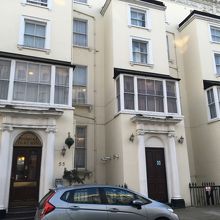
ペンブリッジ パレス ホテル
3.23
この旅行で行ったスポット
ロンドン(イギリス) の旅行記
旅の計画・記録
マイルに交換できるフォートラベルポイントが貯まる
フォートラベルポイントって?









































![Room 49<br />Roman Britain<br />AD 43?410<br />The Weston Gallery<br /><br />Hadrian's visit to Britain, AD122<br /><br />The visit is commemorated in the design of one of Hadrian's coins. The Emperor appears before a parade of soldiers labelled below as EXERC(ITUS) BRITANNICUS, that is [the Roman] army of Britain'.](https://cdn.4travel.jp/img/thumbnails/imk/travelogue_pict/74/00/09/650x_74000936.jpg?updated_at=1661876918)












































































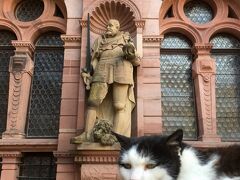
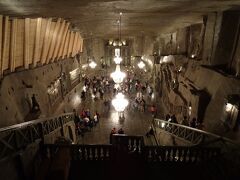



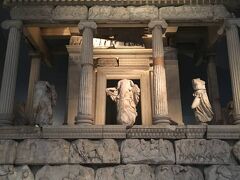
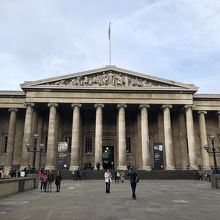










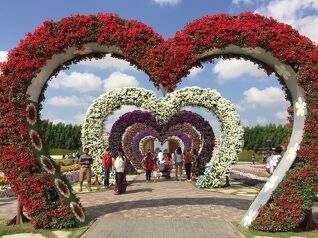
0
115